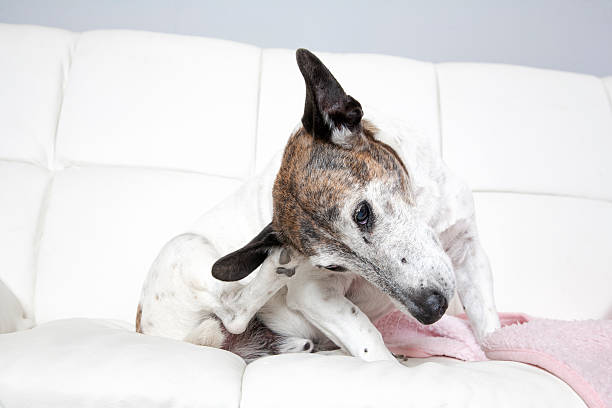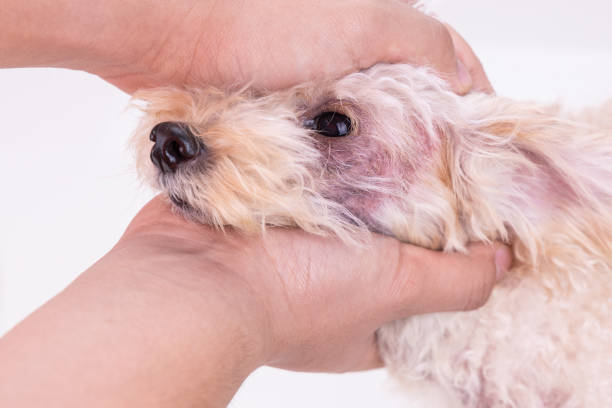Contrary to the common but incorrect belief that dogs aren’t as susceptible to colds and flu like humans are, they can swiftly contract these illnesses from contact with other infected animals or people. If your dog can’t stop sneezing, don’t ignore it as it is an often indication of bronchitis that requires immediate attention.
If your dog is already diagnosed with bronchitis, you should know that there’s no cure for this condition. However, it can be managed quite easily by making some changes in your furry friend’s environment and lifestyle. Here are some tips to help your pup feel better:
1.) Make sure that there are no contaminants in the air by using a HEPA filter. These types of filters can be purchased online or at any pet store;
2.) Give your dog an antihistamine, but note that some types of respiratory disease actually worsen due to this medication. Do not use antihistamines unless you have been authorized to do so by your vet
3.) Monitor the dog’s body temperature throughout the day. Dogs are more susceptible to heat stress in warmer weather, especially when they are older or obese. If you notice that they are panting excessively, bring them indoors immediately
4.) If the dog does not respond to these standard treatments for bronchitis, it may be best to consult your vet. Most vets are more than happy to work with you on an individual basis regarding your pup’s care


5.) Ideally, your dog should get at least 30 minutes of exercise every day to maintain proper respiratory function.
6.) If the weather is freezing, make sure your dog has a warm winter coat. Not only that, their paws should be protected from the snow with boots or some other form of paw protection.
7.) Make sure your furry friend gets plenty of rest by providing an area where they can sleep off the ground if needed;
8.) Gently blow into your pup’s nose while blocking the nostrils closed with one hand;


9.) Encourage them to drink plenty of water;
10.) Gently massage the dog’s throat to help them swallow excess phlegm. Be sure that you’re not forcing anything out of your dog’s mouth.
11.) If you suspect an infection, provide your furry friend with a non-prescription antibiotic for dogs. There are plenty of options to choose from in the market, so it should be a cinch to find one that will work for your dog;
12.) Apply a cool compress on the dog’s face and neck to relieve pain and inflammation. You can also place a humidifier near their sleeping area to add moisture back into the air.


The use of antihistamines should only be undertaken when recommended by a vet since some respiratory diseases are worsened with this type of medication. Additionally, you should monitor your dog’s body temperature throughout the day, especially when the weather.
To prevent respiratory problems from developing into a full-blown cold or flu, be sure to take your dog in for regular checkups with your veterinarian. Your vet will do a thorough physical examination to determine if any underlying problems may have caused the symptoms. They will also quiz you about your dog’s living environment, activities, and eating habits to help them develop the best plan of action when treating your pooch.


Symptoms of a Dog’s Cold or Flu
- Sneezing
- Discharge from eyes or nostrils
- Lack of appetite for food and water, leading to dehydration
- Lethargy and fatigue, and fever (higher body temperature) spike if infected with canine influenza.
If your dog is experiencing any of the symptoms above, you should take it to see a vet as soon as possible. Some symptoms can be brushed off without treatment, but others are serious enough that they could lead to death. If it does turn out that your pup has either cold or flu, then the best way of treating them is with antibiotics. We hope our list helps you figure out how to care for your pet while they are sick.


How long does it take for an antihistamine to work on my pup’s symptoms of cough, sneezing, and watery eyes?
It can take anywhere from 30 minutes to 6 hours for an antihistamine to work on your pup’s symptoms.
When the dog has allergies, it might take a few days of treatment before noticeable improvement. The dose and type of medication will determine the length of time needed for antihistamines to stop sneezing and itchy eyes in dogs. Certain types of medication may have more potent results, but they have adverse side effects, so consult with your veterinarian about what is best for you and your pup.
Is it safe to use an antihistamine without consulting a vet first?
It is safe to use an antihistamine without consulting a vet first, but you might need to consult your veterinarian for more severe issues.
You should avoid using an antihistamine on your pet if he is pregnant, lactating, has kidney disease, or has heart disease.
Conclusion
This article has provided 12 tips for pet owners with dogs who constantly sneeze to help prevent the symptoms from worsening. These include removing allergens in your pup’s environment and altering their lifestyle habits while they are diagnosed with bronchitis or at any point during a respiratory infection.
If you suspect an underlying issue causing your dog’s symptoms to worsen, do not hesitate to take them to see a vet as soon as possible! Be sure to use these techniques regularly so that if they do catch another cold or flu, it doesn’t escalate further than necessary.


